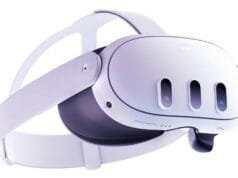
The world of virtual reality is evolving, and with the introduction of the Meta Quest 3, fitness enthusiasts have a reason to rejoice. The Quest 3 promises to bridge the gap where its predecessor, the Quest 2, fell short in the realm of fitness.
Key Highlights:
- Quest 3 introduces next-level mixed reality for immersive fitness experiences.
- Enhanced spatial awareness with high-resolution passthrough.
- Improved safety features for workout sessions.
- Depth sensor for better hand tracking and object recognition.
- Enhanced venting to prevent excessive sweating during workouts.
The Meta Quest 3, unveiled at Meta Connect 2023, has left a significant impression on those who have had the chance to experience it. While the device offers groundbreaking mixed reality features and high-resolution passthrough, its potential in the fitness sector is what stands out the most. The Quest 3 aims to make VR fitness training more feasible and engaging than ever before, thanks to its mixed reality capabilities.
One of the standout features of the Quest 3 is its ability to provide users with a heightened sense of spatial awareness during workouts. This is achieved through its high-resolution passthrough, which allows users to be aware of their surroundings while immersed in a virtual environment. This feature is particularly beneficial for those who may not have a large dedicated space for VR workouts, ensuring safety and preventing potential accidents.
Furthermore, the Quest 3 boasts a depth sensor that enhances hand tracking and provides visual recognition of the proximity of objects. This is a game-changer for fitness enthusiasts, allowing them to safely incorporate weights and other equipment into their VR workouts. The crisp, full-color passthrough ensures that users can accurately position their yoga mats, weights, and other equipment without the fear of damaging their headset or injuring themselves.
Another noteworthy feature of the Quest 3 is its improved venting system. This design aims to prevent excessive sweating during intense workout sessions, addressing one of the common complaints with its predecessor.
However, the success of the Quest 3 in the fitness domain is not solely dependent on its features. The device’s potential as a cross-training tool hinges on its market reception. A larger user base would incentivize developers to create fitness applications tailored specifically for the Quest 3, enhancing the overall VR fitness experience.
In Conclusion:
The Meta Quest 3 is poised to revolutionize the world of VR fitness. With its advanced mixed reality capabilities, enhanced safety features, and user-centric design, it promises to offer an unparalleled fitness experience. As the device gains traction in the market, it is anticipated that developers will harness its potential to create immersive and safe fitness applications, solidifying the Quest 3’s position as the ultimate VR fitness tool.










